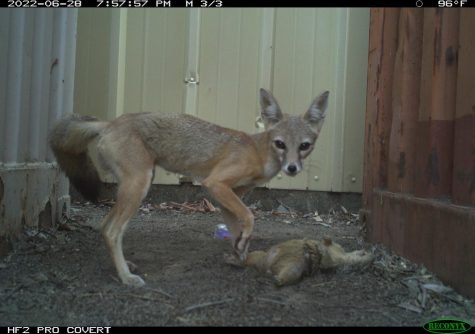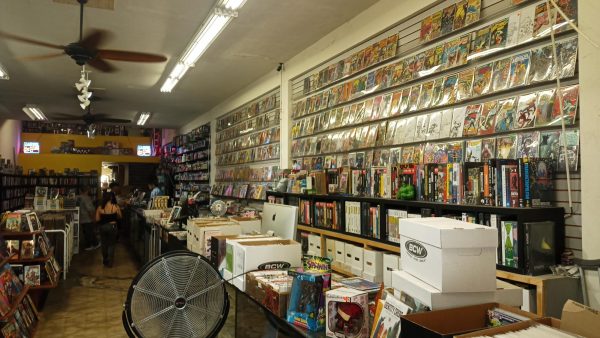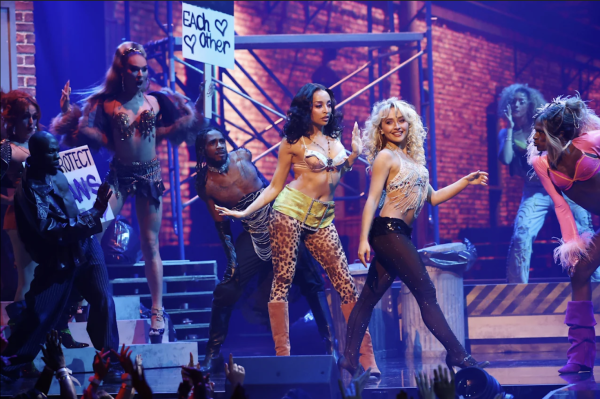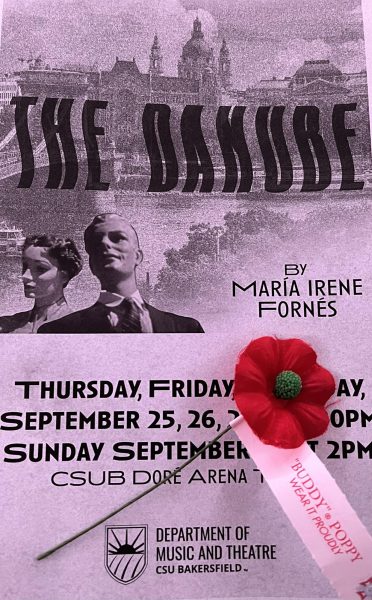CSUB community appalled by extermination attempts by facilities
March 15, 2023

Faculty and students are upset that squirrels are being buried and suffocated inside their burrows on campus. Facilities representatives say it’s for campus safety.
Biology professor Antje Lauer started an email thread in The Campus Sustainability Committee concerning the issue of squirrels being exterminated again on campus on March 2.
According to the email from Lauer, “I was notified by a colleague that Facilities is drowning squirrels again in their dens, trying to reduce the population on campus. We have discussed that in the landscaping committee and pointed out that that is not effective and also cruel.”
Numerous eyewitnesses report that near the tennis courts is where they saw the squirrels being put to “sleep.” This event occurred around 8 a.m. on Thursday, March 2.
Gitika Commuri, associate professor of political science, wrote in the email thread, “I saw a machine in operation at 8:00 a.m. with several pipes going down gopher/squirrel holes that were shut down. I asked the gentleman what was happening and was informed that the squirrels etc. were being put to sleep… well really speaking killed. I did not ask what gas/liquid was being piped down the tubes but am horrified.”
A concern arises when inquiring about the kit foxes that reside here on campus as the extermination of squirrels starts to take place again, because they are protected under the Endangered Species Recovery Program.
In the email thread, Lucas K. Hall, an assistant professor of biology, added, “Apart from squirrels as kit fox food… Kit foxes often appropriate squirrel burrows and those burrows can be interconnected to other subterranean complexes in intricate ways. In fact, subterranean life is a very common strategy in very hot climates, like Bakersfield. Has anyone on campus evaluated the effects of gassing squirrels on other species that also live underground?”
With kit foxes being captured in the same area where the squirrels have built their holes, kit foxes could also be harmed by the actions of Facilities. This means not only are squirrels getting harmed, but other wildlife can be at risk as well as they shelter in the same places against the extreme weather in Bakersfield.
While exterminating the squirrels can cause harm to kit foxes if they get trapped in the dens, management of the squirrel population can also affect the kit foxes as they hunt for their food.
In a combined in-person interview with Hall and Lauer, they brought up how CSUB’s urban ecosystem could be thrown out of balance by getting rid of the squirrels.
“What controls prey is usually their food or what uses them as food. And so, it can be restricting food to them or it can be making sure that there are the things that consider food around right here in the urban landscape. It’s a little different right? We don’t have the exact same animal community in an urban setting as we do in a natural setting,” said Hall.
This makes the squirrel population important to monitor. An urban ecosystem is a fragile one that scientists still do not know everything about as the ecosystems are evolving every day. By limiting a main source of prey for numerous predators, from kit foxes to hawks, CSUB could potentially hurt the balance of the urban ecosystem.
Hall continued, “They’re [Kit foxes] active mostly at night, but they also live underground where squirrels live and so there’s a greater chance that they encounter each other… We’re finding through our cameras at dens that it’s not uncommon to see squirrel remains around those areas suggesting that kit foxes are using them as prey.”
The squirrels having their population affected by Facilities has numerous members of CSUB vocalizing their passion on this situation as they realize this type of action could have severe consequences for the urban ecosystem, especially the protected kit foxes.
“When we have endangered species here, we should have an obligation to protect them, right? I think what they did is wrong, but it’s really hard to nail them down,” said Lauer.
An anonymous account dedicated to the squirrels at CSUB has also been observing the matter.
“When I found out they decided to go with the option of drowning, I was disappointed but was kind of expected. I just didn’t expect for them to opt to something that slowly takes their life away as they fight for air in their burrows,” the Instagram account @csub_squirrelz wrote in a direct message.
This is not the first time that something like this has occurred on the CSUB campus. A situation to control the university’s “underground rodent” population happens more often than the campus community is made aware of.
These actions by Facilities are getting so much attention from the campus community because of the email thread. Also, with there being more people on campus following the Covid-19 pandemic, numerous people were able to witness the exterminations as they walked around campus last week.
In an interview, Commuri responded to why she believed this population control was happening.
“I’m sure they’re [squirrels] a little bit disruptive, but you know, how are we going into it to the extent where we have to now exterminate like extensively? Because, you know, this was what I noticed here, but other people noticed it in other places,” said Commuri.
People at CSUB are aware there is a situation going on with the squirrels but are unaware of what the specifics are. Joseph D. Hedges, associate vice president of Capital Planning & Design and Facilities Management Services, provided more clarity on the situation for the campus community.
“The first priority at CSUB is the safety of our students, faculty, staff and visitors, and so we work hard to mitigate or eliminate any hazards see on campus… The holes have caused several accidents over the years, including falls that have resulted in leg, ankle, and other injuries,” through Jennifer Self, senior director of Strategic Communications/Public Information Officer, Joseph D. Hedges responded
“CSUB uses the most advanced, humane methods for rodent control and follows all federal, state, county and city environmental and pest control statues and regulations. The two rodent control strategies used at CSUB are Pressurized Exhaust Rodent Control and trapping in confined spaces. Pressurized exhaust gas (2.5% carbon monoxide) is injected into burrows using probes or hose extensions, purging air from the burrow,” Hedges added.
According to Hedges, this is the most humane way to exterminate the underground rodents.
This topic is now becoming a conversation that can be heard all throughout campus.
People at CSUB are divided into whether the squirrel population should be watched under a careful eye; however, people are questioning what really took place during the week of March 2.
This situation is far from over, as talks of the controlled squirrel population become a growing discussion all over our campus. The people of CSUB call for a more humane way to control the squirrel population that doesn’t involve them being put to “sleep” by gas that is administered into the holes they preside in.





